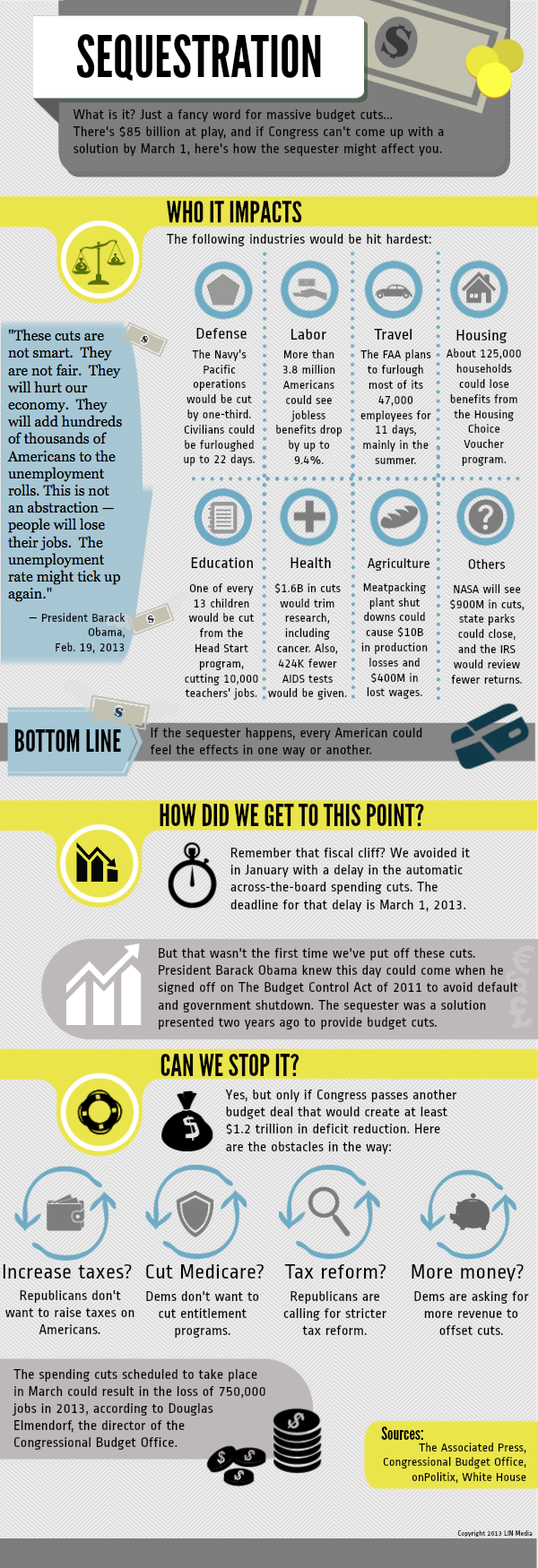
Sequestration And Its Effect On Individuals With Special Needs
There has been much focus in the media and elsewhere recently on “sequestration” and the impending budget cuts. What does it all mean? How will this affect access to programs and services for people with disabilities? These are not easily answered questions because at this point, no one knows how the cuts will impact the day-to-day life of most Americans in the long term.
Below is a summary of the effects of the budget cuts as of the time this article was published. As time passes, perhaps we will see in greater detail the impact these cuts has on people with disabilities. But for now, all we can do is stay informed and advocate to others and to our representatives in Congress to make sure our voice is heard regarding budget cuts that affect people with disabilities.
What Is “Sequestration”?
Sequestration is a series of automatic cuts to federal government spending. The cuts total approximately $1.2 trillion and will come into effect over the course of the next 10 years. These across-the-board cuts were originally intended to put pressure on legislators to agree to a budget that would reduce the federal deficit by $85 billion. Despite previously preventing the cuts from taking place by passing a law, Congress was not able to agree on a budget by the March 1, 2013 deadline. Therefore, last Friday, March 1, 2013, those cuts went into effect.
What Is Eligible To Be Cut?
The cuts will be split between defense and domestic discretionary spending. Discretionary spending is often optional and based on fiscal policy (compared to entitlement programs, for which funding is mandatory). Discretionary spending usually refers to spending set on a yearly basis that has been authorized by Congress. The cuts would result in a proportional reduction in the budget of all non-exempt programs. Economists estimate the cuts could be as high as 8-9% of the overall budget. The precise amounts will be determined by the Office of Management and Budget (OMB).
Cuts Affecting Individuals With Disabilities
For those with disabilities, these cuts could mean reductions to the budgets for special education, transportation, housing, employment and advocacy programs. Below is a summary of program areas likely to be cut:
1. Medicare
While most programs will face a high cut to the budget, Medicare cuts are limited to 2% per fiscal year. For 2013, a 2% cut, according to the Congressional Budget Office, could mean a reduction of $123 billion dollars.
2. Housing
There will be an estimated $1.9 billion in cuts to housing assistance. This includes programs for those with disabilities, low income, and the elderly, like the Housing Choice Voucher Program. This could result in the loss of housing assistance for an estimated 125,000 people.
3. Education
An estimated $978 million in cuts in comprehensive education funding would affect an estimated 30.7 million special education students. Funding for special education specifically could be cut by $600 million, resulting in a loss of up to 15,000 special education teachers and 7,200 special education support workers. This would likely result in higher class sizes and greater stress in already limited resources. Finally, federal funding for IDEA will be reduced by an estimated $1 billion.
4. Head Start programs
Head Start is a federal program that promotes the school readiness of children ages birth to five from low-income families by enhancing their cognitive, social, and emotional development. Approximately 70,000 children will lose access to Head Start services because of this sequestration.
5. Employment
Vocational rehabilitation, a program that helps people with disabilities succeed in the workforce will likely lose $160 million. This would result in a reduction of services and increasing delays in getting services.
6. Military Programs
Military programs like TRICARE (health insurance for military personnel and their families) and family support programs that may help families with disabilities would face cuts.
What mandatory programs will not be cut?
There are certain programs, whose funding is deemed mandatory by law that will not face budget reductions. However, it is important to keep in mind that while the funding for the programs themselves will not be cut, the administrative funding (which is sometimes considered discretionary) may be cut. Thus, even if the program itself is not cut, people could expect longer wait times to get assistance because the program had to cut its administration budget resulting in a reduction of staff hours.
1. Assistance to individuals with low incomes
programs like TANF (welfare), SNAP (food stamps), and CHIP (Children’s Health Insurance Program).
2. Social Security
Disability benefits will remain the same. However, the administrative cuts could require the Social Security Administration to cut back on staff resulting in delays in processing disability claims and other customer services. Some researchers estimate an increased wait of 2 weeks for responses to disability claims, or a month or longer delay for disability hearing decisions.
3. Veterans health care programs
However, due to cuts to TRICARE, the VA system could experience increased requests for services as veterans are unable to get coverage through traditional health insurance.
Prepare for Funding Cuts and Longer Wait Times
With such uncertainty, families need to plan ahead for longer wait times for those programs facing administrative cuts. Families also need to prepare for cuts to programs and services they have previously received. Unfortunately, the practical impact of the cuts may not be seen for many weeks or months and is based on several factors like how and when the program last received funding. For example, some programs that are funded annually will not see cuts until July when the next budget distribution is scheduled. Thinking about education, this is right about the time when IEP meetings are set and planning is done for the next school year. Thus, it is important to stay aware of how your child’s school will be handling the cuts and how it may affect any upcoming changes to your child’s IEP. It is important now, however, for legislators to stop pointing fingers and to figure out a way forward. Regardless of whether the budget cuts stay or if a new budget is created – a viable path needs to be developed to ensure those who need services or programs are not unfairly denied.



